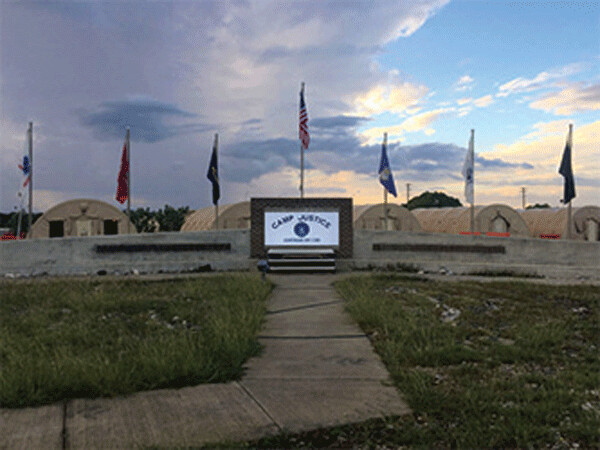The Tropic of Torture, from Guantanamo to Washington

All eyes are on the U.S. Senate this week for the impeachment trial of President Donald J. Trump, only the third presidential impeachment trial in U.S. history. But another important trial is happening at the same time, far from the eyes of the public, at the U.S. Naval Base at Guantanamo Bay, Cuba. Behind the razor-wire fencing of "Camp Justice," five of the remaining 41 Guantanamo prisoners sit through more pretrial hearings, almost 20 years after the Sept. 11, 2001, attacks they are charged with perpetrating.
One witness this week is Dr. James E. Mitchell, a retired Air Force psychologist who, with his partner, psychologist John "Bruce" Jessen, developed and then implemented the CIA's post-9/11 torture program. Mitchell and Jessen actively participated in torture sessions at CIA black sites. Both have long maintained that they were only contractors, taking orders from the CIA. Despite having no prior experience with interrogation, they were paid handsomely, receiving at least $81 million in taxpayer dollars from the U.S. government for their work on the torture program. Torture is a war crime, and those who torture should be prosecuted. But Mitchell is not the one on trial this week. Indeed, he defiantly said in court this week, "I'd get up today and do it again." Mitchell was sitting in the courtroom, not far from his torture victims.
The pretrial hearings at Guantanamo this week are an attempt by the defense attorneys for the five, all who face the death penalty, to suppress statements the defendants made to the FBI during or not long after being tortured by the CIA. Among the five prisoners is the alleged 9/11 mastermind, Khalid Sheikh Mohammed, who was waterboarded 183 times -- some or all of which were directly conducted by Mitchell. Waterboarding is a torture technique that uses water and a wet towel over one's mouth and nose to bring a victim to the brink of suffocation, simulating drowning.
Mitchell and Jessen shun the word "torture," preferring the euphemism "enhanced interrogation techniques," or "EITs." The American Civil Liberties Union sued Mitchell and Jessen on behalf of two CIA prisoners and the family of another CIA torture victim, Gul Rahman, who died during his brutal interrogation and torture at a CIA black site in Afghanistan. In the lawsuit, the ACLU summarized some of these "EITs": "Torture methods devised by Mitchell and Jessen and inflicted on the three men include slamming them into walls, stuffing them inside coffin-like boxes, exposing them to extreme temperatures and ear-splitting levels of music, starving them, inflicting various kinds of water torture, depriving them of sleep for days, and chaining them in stress positions designed for pain and to keep them awake for days on end."
Mitchell and Jessen said they reverse-engineered techniques taught to the U.S. military to avoid capture, or, if caught, how to resist torture and interrogation. The military training is called "SERE," for Survival, Evasion, Resistance and Escape. In theory, SERE was developed to help people survive. Mitchell and Jessen developed techniques to harm people, not to help them. That vital distinction raised ethical concerns with members of the American Psychological Association (APA) - concerns that were dismissed by the organization's leadership, eager to please the administration of President George W. Bush. Anti-torture psychologists led a multiyear campaign challenging the collusion of the APA, the world's largest professional association of psychologists, with the Pentagon and the CIA. The APA leadership was ultimately ousted, and the organization barred its members from participating in harsh interrogations.
While he was campaigning for the Republican presidential nomination in 2015-16, Donald Trump frequently touted the need for torture, even though torture is almost universally acknowledged to deliver false or unreliable information. "I would bring back waterboarding, and I'd bring back a hell of a lot worse than waterboarding," he bragged at one of the candidate debates.
Speaking on the "Democracy Now!" news hour, Baher Azmy, legal director at the Center for Constitutional Rights, a nonprofit law organization that has represented scores of Guantanamo prisoners, reflected on the impeachment trial of Donald Trump and the Guantanamo military tribunals: "They are, in a sense, both show trials. The military commissions process was generated instead of a traditional Article III criminal trial, in order to suppress the truth, in order to repress accountability for war crimes and, in the Senate trial, repress accountability for an abuse of power."
This week, the tortured logic of the U.S. system of justice is on full display, from Washington, D.C., to Guantanamo Bay.
(c) 2020 Amy Goodman and Denis Moynihan Distributed by King Features Syndicate
